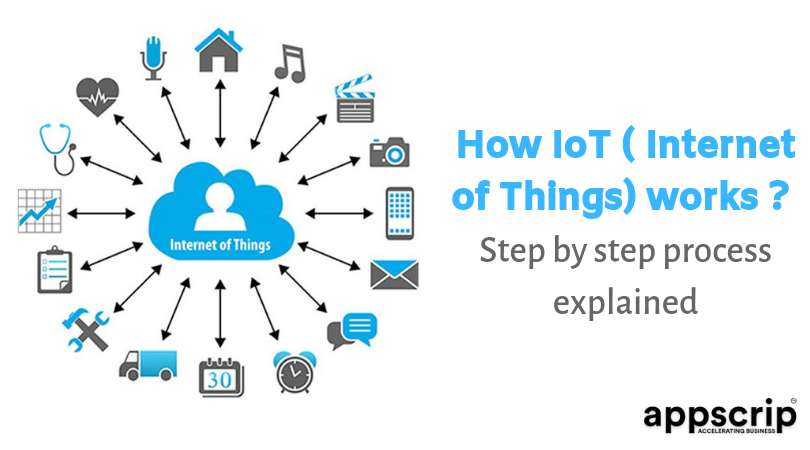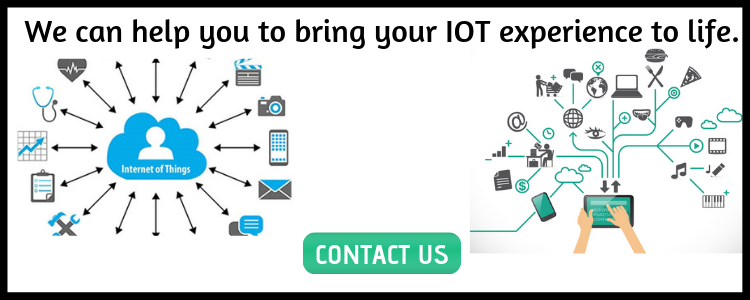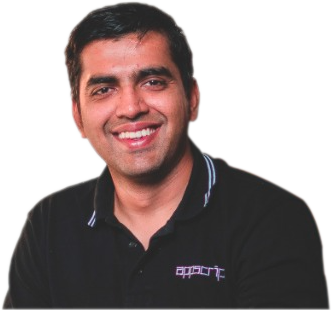Have you ever wondered what will happen if your music system, bread toaster, washing machine, TV, juicer, car i.e. almost all of your electronic devices are connected to each other and can talk!! Well yes, literally! What will happen then? Welcome to the world of internet of things !
What Is IoT (Internet of Things)?
As per Wikipedia, the Internet of things is the extension of Internet connectivity into physical devices and everyday objects.
It can be embedded with electronics, Internet connectivity, and other forms of hardware, these devices can communicate and interact with others over the Internet, and they can be remotely monitored and controlled.
Despite this simple definition, many are not able to understand the process involved in IoT. There are many articles on Google explaining its pros and cons but only a few are explaining its process.
So being a tech blog we thought it is our responsibility to make you understand IoT in the simplest form if you have not understood the definition then simply go through the step by step process involved in IoT mentioned below.
The Steps Involved Around IoT ( Internet of Things)
1. Data Ingestion
IoT devices/sensors collect data from the environment. The data can be as simple as temperature/humidity or it can be as complex as a full video feed.
The data needs to be sent to the cloud to be analyzed. But it needs a way to get there.
Almost 5 quintillion bytes of data produced every day by IoT devices
2. Data Transmission
The data is transmitted to the cloud via Gateways (Telemetry Devices), The gateways use both cellulars as well as satellite communication to transmit the data.
To ensure data security, protocols such as Bluetooth, Sig Fox, LoRa, NB-IoT, ZigBee, COAP, REST, DDS, MQIT, XMPP, etc. are used
Also Read: Augmented Reality Software: Comparison Between ARKit And ARCore
3. Data Processing
Once the data gets to the cloud, the IoT platform processes it. The processing can be as simple as checking if the temperature is within the acceptable range or it could be very complex, such as using computer vision on the video to identify objects.
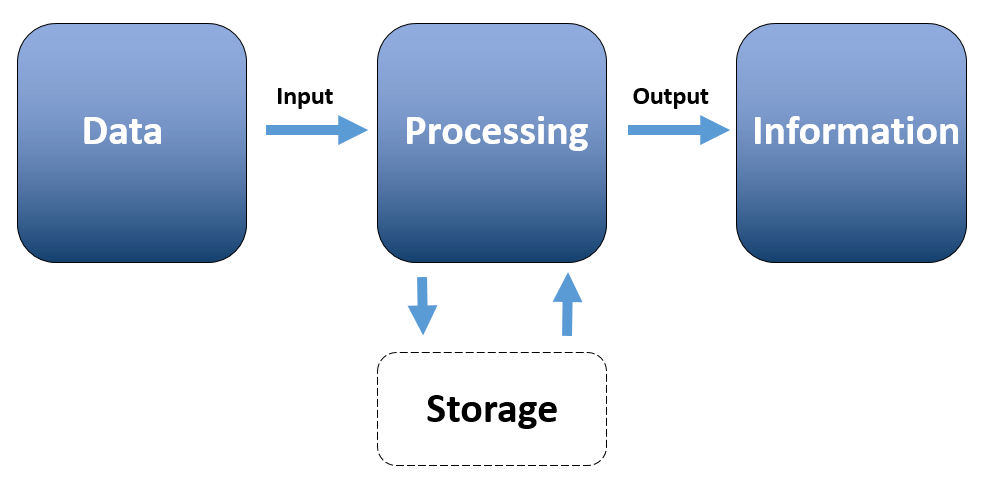
The data processing cycle consists of three stages: Input (Data), Processing (+ Storage), and Output (information). This is the stage where data is collected and converted into a machine-readable form.
The second stage is processing. It is where data is classified into groups, arranged in an order (for example: alphabetical) and calculated (via arithmetic and logical operations).
At the third stage, the data is converted into human-readable form.
During the data processing cycle, the information is stored for future use.
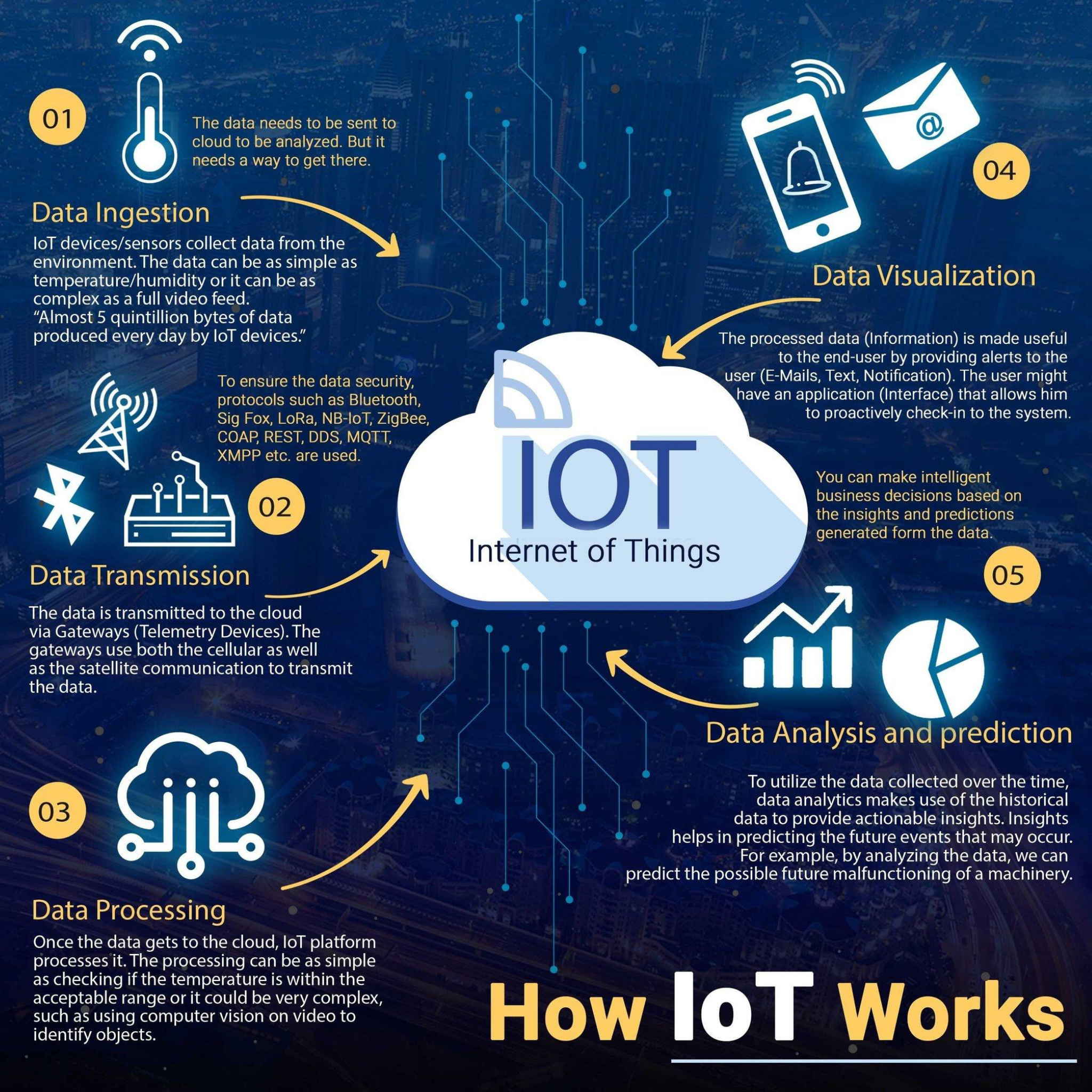
4. Data Visualization
The processed data (Information) is made to the end-user by providing alerts to the user (E-Mails, text, notification). The user might have an application (interface) that allows him to proactively check in to the system.
5. Data Analysis And Prediction
To utilize the data collected over time, data analytics makes use of the historical data to provide actionable insights. Insights help in predicting future events that may occur. You can make intelligent business decisions based on the insights and predictions generated from the data.
Conclusion
Hope you find this article helpful in understanding the basic function of the Internet of Things. For any doubt or suggestion, click the link below to fill up the comment form. If you love technical stuff do subscribe to our blog via email address.

Digital marketing consultant, helps clients generate leads, drive site traffic, and build their brands through useful, well-designed marketing strategies.
